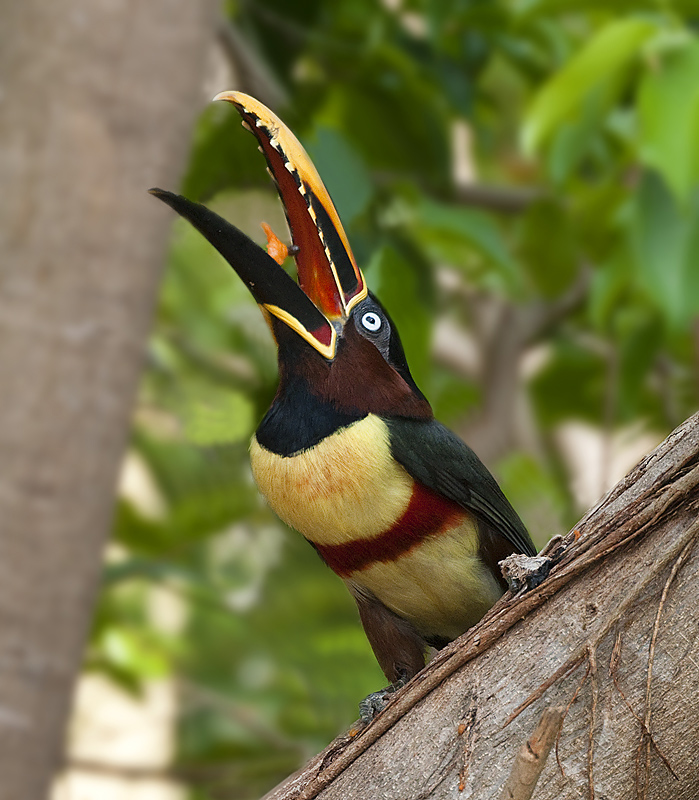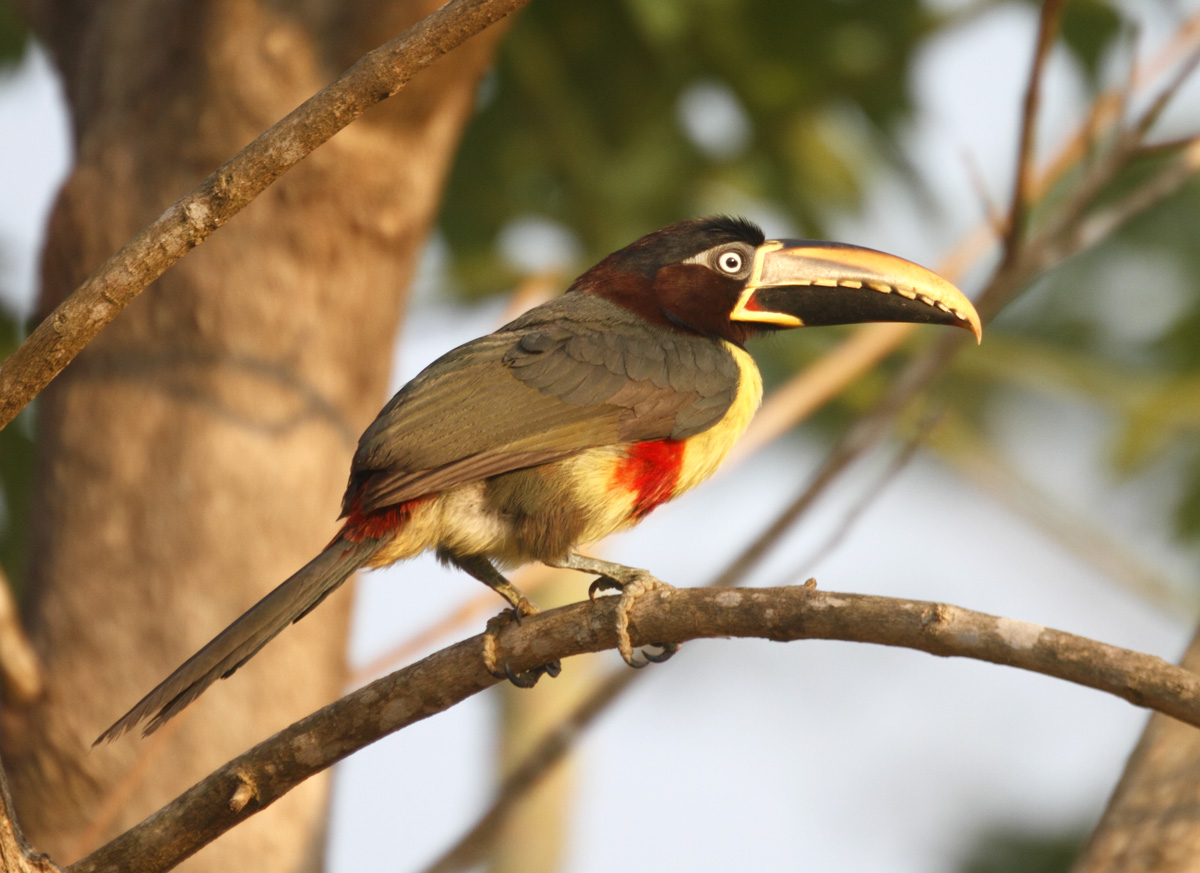
Pteroglossus castanotis
TAXONOMY
Pteroglossus castanotis Linnaeus, 1758. This genus falls between
green toucanets (Aulacorhynchus) and black toucanets (Selenidera).
OTHER COMMON NAMES
French: Aracari а oreillons roux; German: Braunohr-Arassari;
Spanish: Arasari Orejicastano.
PHYSICAL CHARACTERISTICS
The smallest and most slender of the toucans; compared to
others in the genus, this species is comparatively large and
heavy bodied. Length about 18 in (46 cm); average weight
8.7–9.7 oz (247–275 g) males; 8.5–9.5 oz (240–271 g) females.
This species is named for the chestnut “ear” patches on its
black head. Plumage is typical of this genus, with a dark-green
back and yellow underparts; the species is distinguished from
close relatives by the single red band across its yellow belly.
Bill is dark-brown to black with a yellow streak extending to
the tip of the upper mandible and distinct, ivory-colored
“teeth.” Eye is usually white but sometimes straw yellow; skin
around the eyes is blue.
DISTRIBUTION
The most widely distributed aracari, found throughout the
tropics of South America, from the Colombian Amazon
through eastern Ecuador, Peru, and Boliva, western Brazil, and
eastern Paraguay to northeastern Argentina.
HABITAT
This species occurs in moist lowland tropical rainforest, up to
2,950 ft (900 m) elevation, often in swamp forests or along lake
and river edges; it is the most common aracari on river islands.
Unlike most other toucan species, often found in open forest
HABITAT
and even gardens around homes; commonly seen at
forest edges and roadsides.
BEHAVIOR
Hilty and Brown describe the call as “a sharp, inflected skeezup.”
Often seen in pairs but birds also forage in small family
groups of three to five. Individuals roost nightly in woodpecker
holes, sometimes evicting the official occupant.
FEEDING ECOLOGY AND DIET
Mainly eat fruit of Cecropia, Ocotea, Ficus, and Coussapoa; will
hang upside down to reach fruit. Occasionally take insects and
have been documented raiding nests of yellow-rumped caciques
(Cacicus cela) among others. Sometimes forage in mixed flocks
with other toucan species.
REPRODUCTIVE BIOLOGY
Not well known. This species nests both in tree holes and in
abandoned arboreal termitaria.
CONSERVATION STATUS
Not threatened.
SIGNIFICANCE TO HUMANS
Sometimes hunted for meat.
Other popular Animals
Photo Gallery of - Chestnut-eared aracari




 Animalia Life
Animalia Life